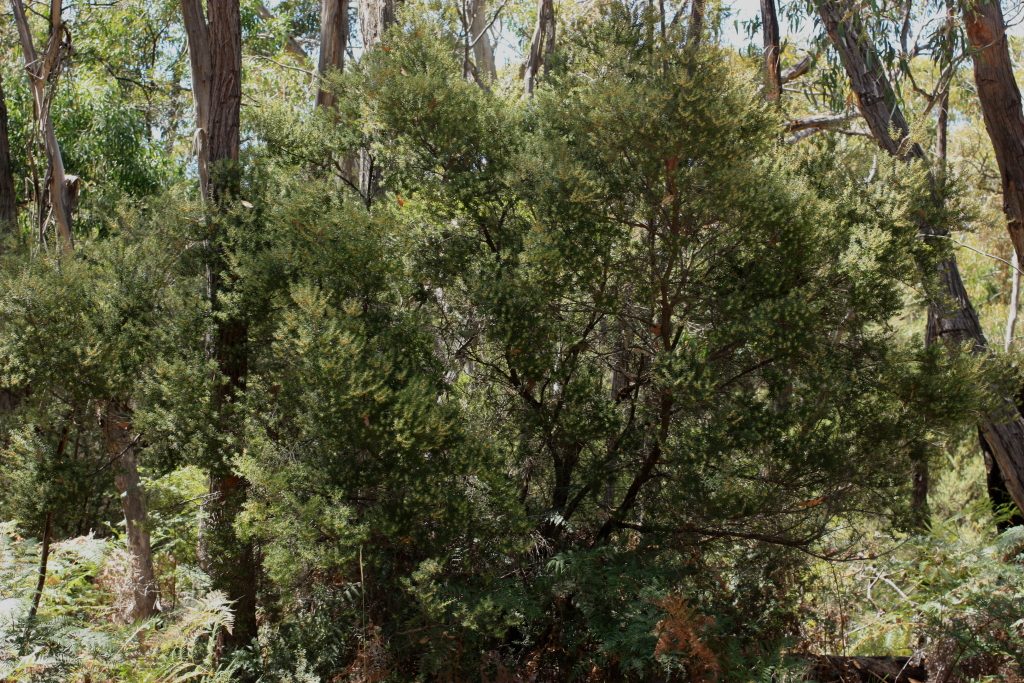Monotoca billawinica
Albr.Dense shrub or small tree to c. 4.5 m high; branchlets glabrous or puberulous. Leaves elliptic, c. 9–17(–26) mm long, 2.1–4.2 mm wide, mucronate, flat to convex, glabrous, lower surface distinctly whitish; margins smooth, plane to slightly recurved; petioles glabrous abaxially. Flowers 2–8 in axillary spikes or the lowermost solitary, pedunculate; lowermost spikes with peduncle 0.6–2.7 mm long, sterile bracts absent or very rarely 1–2; bracts, bracteoles and sepals obtuse; bracts persistent, 0.3–1.1 mm long; bracteoles 0.8–1.4 mm long; sepals 1.2–1.9 mm long; corolla whitish-cream, campanulate, 1.6–2.3 mm long in female flowers; 2.4–3.1 mm long in males; corolla lobes glabrous or occasionally papillose, c. equal to tube; anthers 1.2–1.9 mm long, exserted from corolla tube at maturity; ovary plus style 0.9–1.3 mm long. Fruit ovoid to spherical, c. 2.5–3 mm long, red-orange at maturity. Flowers Feb.–Apr.
GGr, DunT. Endemic in the Grampians on the higher parts of Victoria and Mt Difficult Ranges where occasional to locally plentiful amongst sandstone rocks and in sandy loam in shrubland, woodland and open-forests.
Closely related to M. glauca, differing in size of floral parts, petiole vestiture and features of the fruit. In some locations M. billawinica hybridizes with M. scoparia.
Albrecht, D.E. (1996). Epacridaceae. In: Walsh, N.G.; Entwisle, T.J., Flora of Victoria Vol. 3, Dicotyledons Winteraceae to Myrtaceae, pp. 464–509. Inkata Press, Melbourne.
 Spinning
Spinning